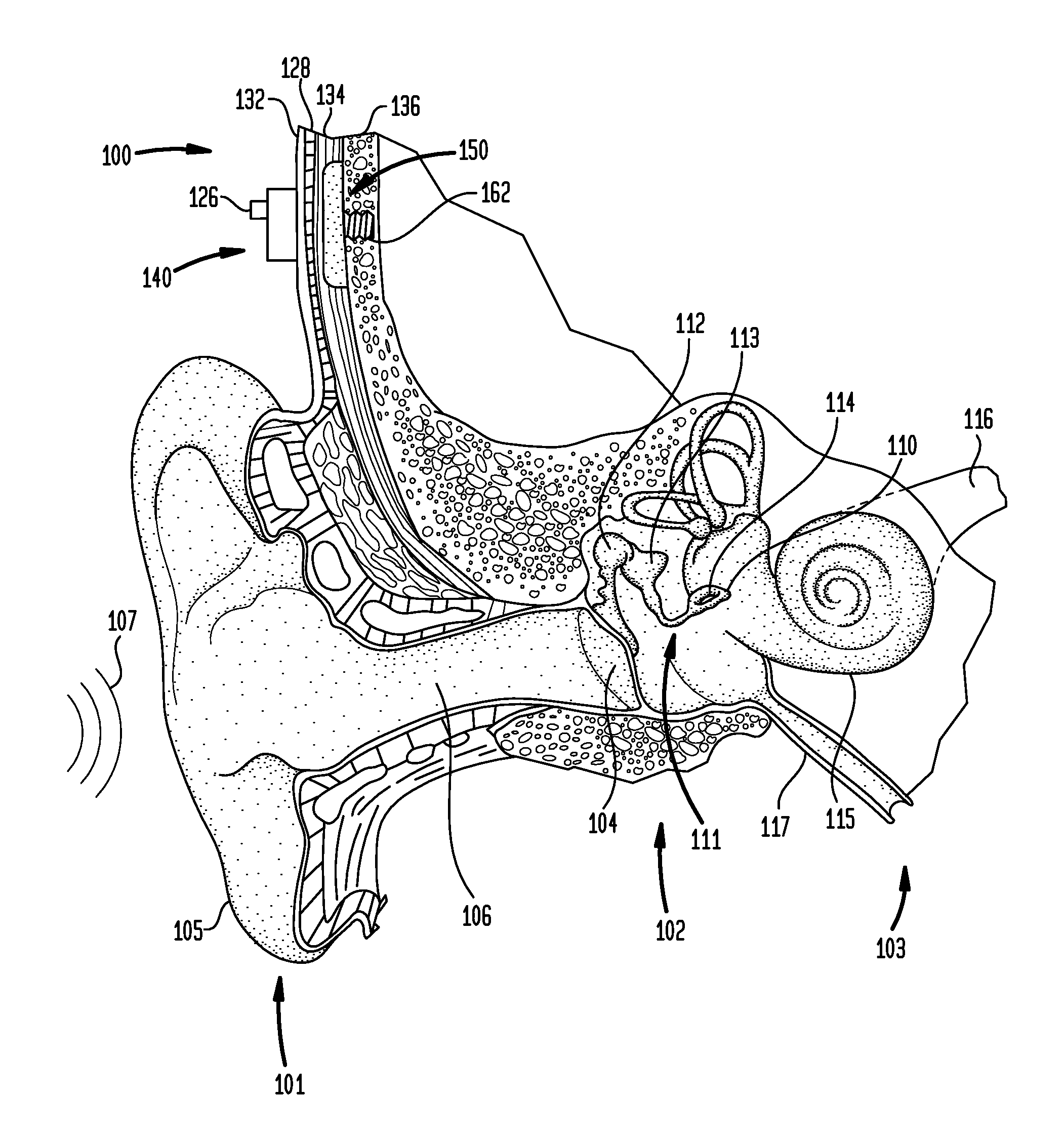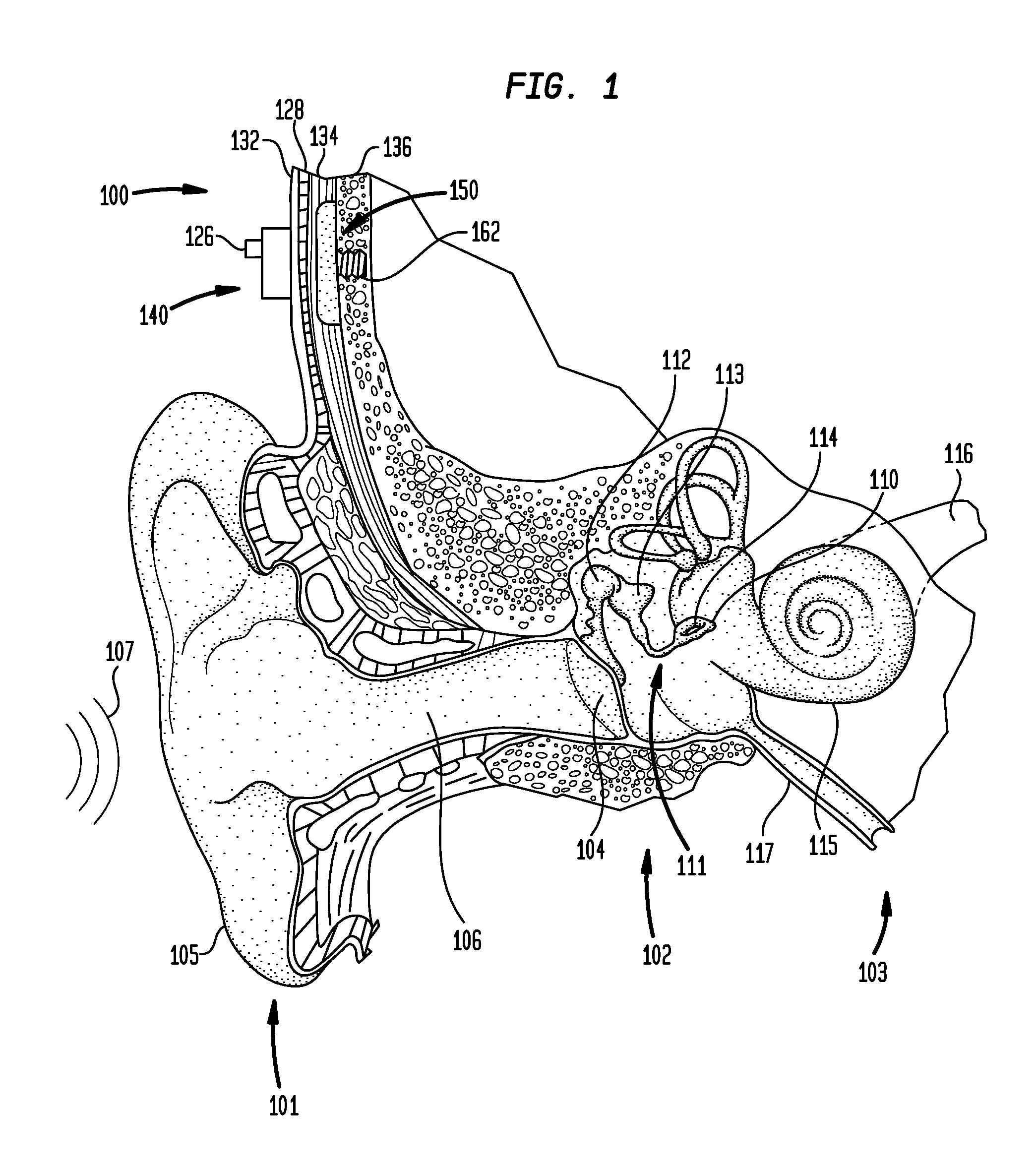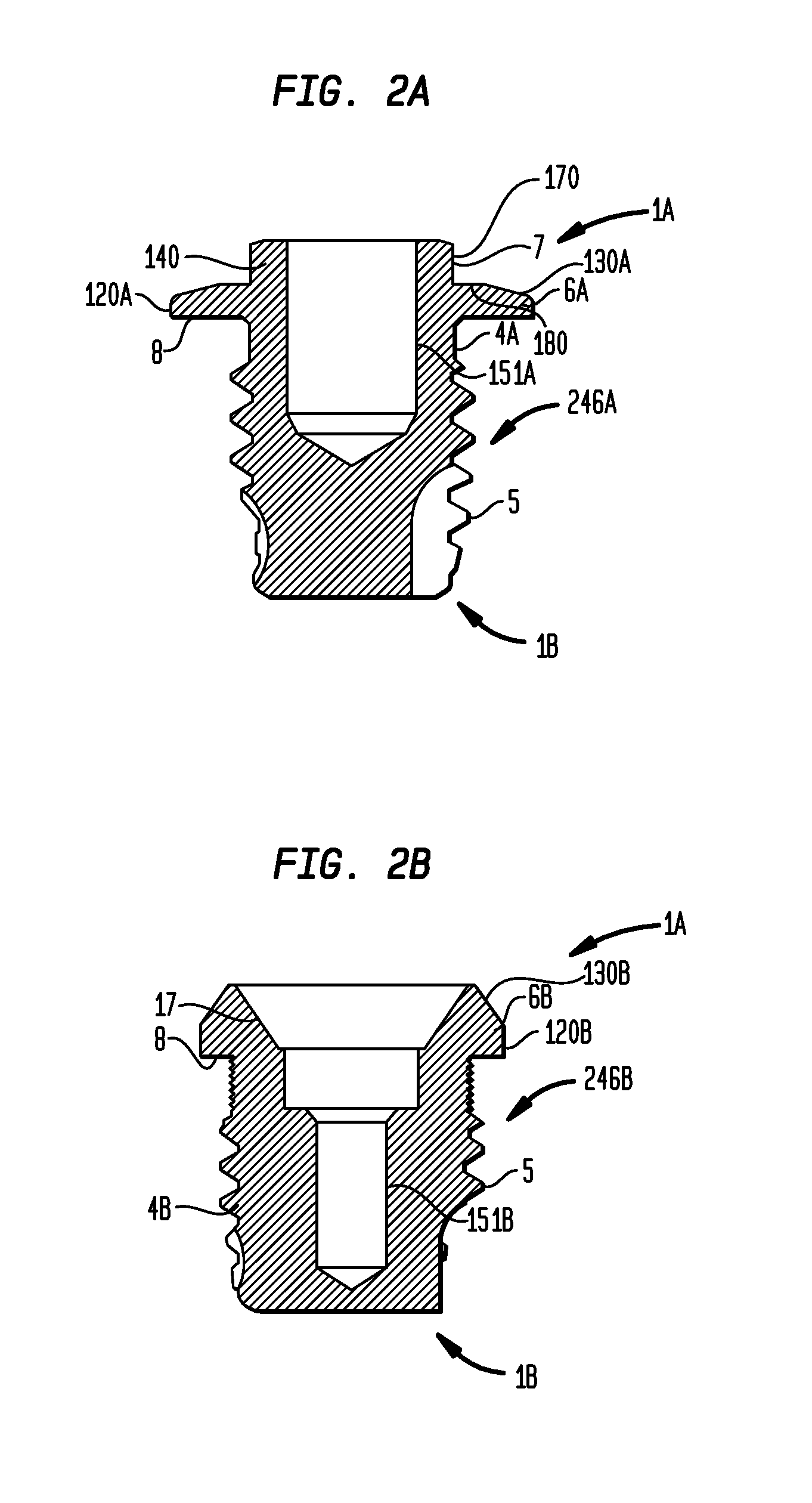Implantable component of a hearing prosthesis
a technology of implantable components and hearing prostheses, which is applied in the field of implantable components of hearing prostheses, can solve the problems of conductive hearing loss and impede the normal mechanical pathway that provides sound to hair cells in the cochlea, and achieve the effect of minimizing the conduction of vibrational energy
- Summary
- Abstract
- Description
- Claims
- Application Information
AI Technical Summary
Benefits of technology
Problems solved by technology
Method used
Image
Examples
Embodiment Construction
[0024]Some aspects of the present invention are generally directed to bone conduction devices configured to deliver mechanical vibrations to a recipient's cochlea via the skull to cause a hearing percept. The implantable component of a transcutaneous bone conduction device includes a vibrator portion, such as an implantable plate in the case of a passive transcutaneous bone conduction device, or an implantable vibrating actuator and housing in the case of an active transcutaneous bone conduction device, configured to vibrate in response to a sound signal to evoke a hearing precept. The implantable component also includes a screw portion configured to attach the implantable component to a recipient. The vibratory portion is rigidly adhered to the screw portion such that there are no gaps or seams between the housing and the screw portion in which bacteria may be contained / in which a biofilm may develop at levels greater than about levels of other portions of the vibratory portion.
[00...
PUM
 Login to View More
Login to View More Abstract
Description
Claims
Application Information
 Login to View More
Login to View More - R&D
- Intellectual Property
- Life Sciences
- Materials
- Tech Scout
- Unparalleled Data Quality
- Higher Quality Content
- 60% Fewer Hallucinations
Browse by: Latest US Patents, China's latest patents, Technical Efficacy Thesaurus, Application Domain, Technology Topic, Popular Technical Reports.
© 2025 PatSnap. All rights reserved.Legal|Privacy policy|Modern Slavery Act Transparency Statement|Sitemap|About US| Contact US: help@patsnap.com



